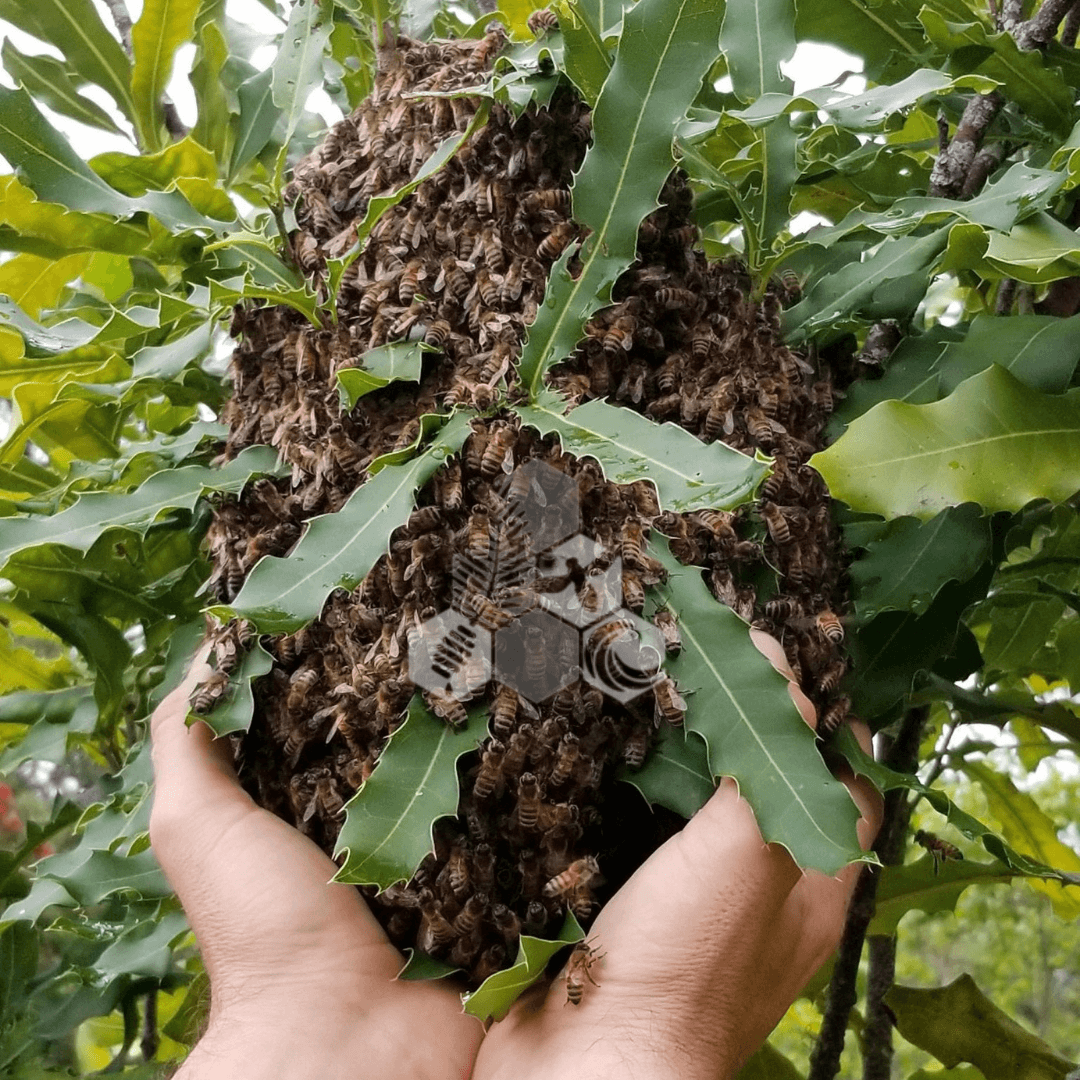
The Mystique of Honeybee Swarms and Beekeeper Hive “Splits”
Share
In the world of honeybees, swarming is an awe-inspiring spectacle that captivates both nature enthusiasts and seasoned beekeepers alike. Honeybee swarms are not only an extraordinary natural phenomenon but also a vital part of the honeybee life cycle. In this article, we will explore the reasons behind honeybee swarming, the mechanics of how it occurs, the importance of swarming for the bees, and how beekeepers employ a technique called "making splits" to manage and harness this phenomenon for their benefit.

Why Do Honeybees Swarm?
Swarming is a natural reproductive process for honeybees and a means of perpetuating their species. Honeybee colonies, particularly when they become overpopulated prepare to divide and form new colonies through swarming. When the population in a hive reaches a certain threshold, usually in late spring or early summer, the colony's queen bee begins laying eggs in special, larger cells called "queen cells." These cells will later develop into new queen bees. The old queen who has dropped significantly in weight to prepare for her voyage, and a portion of the worker bees usually around half, leave the hive in search of a new home.

The Mechanics of Swarming:
The process of honeybee swarming involves a series of coordinated events within the hive. First, scout bees explore the surrounding area to find suitable new nesting sites. Meanwhile, the worker bees prepare the swarm's departure by gorging on honey, which serves as their sustenance during the transition period. The queen bee, who carries the future of the colony, also prepares for swarming by slimming down to ensure she can fly effectively.
When the time is right, the swarm leaves the hive in a mesmerizing cloud of bees. This swarm can be an impressive sight, with thousands of bees swirling and buzzing in the air. The bees gather around a temporary resting place nearby, typically a tree branch or other convenient structure, forming a cluster. Here, they protect the queen while scout bees continue their search for a suitable permanent home. Once the scouts return with potential locations, the bees engage in a unique decision-making process known as "swarm democracy," where they collectively choose the best site for their new colony.

The Importance of Swarming:
Honeybee swarming is crucial for the survival and health of the species. Swarming allows honeybees to expand their population, establish new colonies, and maintain genetic diversity. It also helps bees cope with challenges such as pests, diseases, and environmental changes. (By having an initial break in the brood cycle, varroa mites have a die off period and greatly benifits the hive.) By dividing the population and creating multiple colonies, swarming ensures that if one colony faces adversity, the others have a higher chance of survival. Additionally, swarming helps rejuvenate older colonies, as the remaining bees raise a new queen who can revitalize the genetics and vitality of the hive.
Beekeeper's Role: Making Splits
Beekeepers have developed techniques to manage honeybee swarming, prevent losses, and increase their hive numbers. One such technique is making splits. A split involves intentionally dividing a strong, healthy colony into two or more smaller colonies. Beekeepers carefully inspect the hive and identify a frame containing eggs, young larvae, and a few nurse bees. This frame is then moved to a new hive along with additional frames containing honey and pollen stores. The original queen is transported away with the new split.

IMPORTANT for BEEKEEPERS: one of the biggest mistakes I have seen new beekeepers make over the years is not taking the old queen away with the new split. Taking her with the new split ensures that all of the bees in the hive, will remain with the hive. This is because of the queens presence/pheromones and minimizes the risk of the workers not flying back to their original hive location, or worse getting lost. The foraging bees that were out for the day will come home to the old split to repopulate and begin to raise a new queen.
*don’t bee afraid to take more then half the population away when making a split, especially in the middle of the day. This is because there are thousands of foragers who will return home in the evening.
It is always good to move your splits to a new bee yard or at least have them face a different direction then your original to avoid future complications with voyaging flights.

By making splits, beekeepers can increase their colonies and prevent swarming from occurring naturally, thereby minimizing the risk of losing bees to the wild. It also provides an opportunity for beekeepers to propagate desirable traits, such as honey production, gentle behavior, or disease resistance, by selectively raising queens from their best-performing colonies. And the most important thing at Māla Honey Botanicals is always starting and perpetuating strong queen genetics to promote regenerative agriculture and products. It’s all about the bees.

